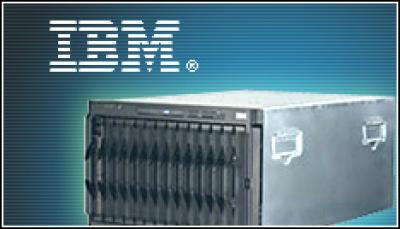The IT industry’s hardware manufacturers have been busy bringing out a slew of desktop and server products designed to capitalise on Intel’s newest ‘Nehalem’ processor micro architecture in the last few months.
Nehalem is the latest range of Intel’s Xeon processors, and at its launch last year was touted as Intel’s most significant processor launch since the Pentium Pro in 1995. Since then, the race has been on to harness the latest enhancements with compelling enterprise-scale products.
Nehalem wins plaudits
 Even when eWEEK Europe Labs pronounced its verdict on Nehalem a little less than a year ago now, it predicted that developments based on its architecture would enable IT managers to consolidate more virtual machines onto fewer physical systems. It also speculated that the new Intel platform would also act as a trigger for IT managers to take a second look at virtualising applications that did not perform well when run on virtual machines (VMs) hosted on the previous generation of Intel server chips.
Even when eWEEK Europe Labs pronounced its verdict on Nehalem a little less than a year ago now, it predicted that developments based on its architecture would enable IT managers to consolidate more virtual machines onto fewer physical systems. It also speculated that the new Intel platform would also act as a trigger for IT managers to take a second look at virtualising applications that did not perform well when run on virtual machines (VMs) hosted on the previous generation of Intel server chips.
A year on, and we’ve seen Cisco release its Unified Computing System data centre platform launched using only Intel Nehalem-based processors in the hope that data centre managers will buy into its packaged compute, storage, network, memory and server virtualisation in a unified chassis. But with considerable workload balancing, policy enforcement, compliance, replication, optimisation and power management being controlled at the server and the storage levels, the usual server vendors, including Dell, HP and IBM, as well as a couple of network attached storage (NAS) vendors have also predictably got in on the Nehalem act.
Now, the upcoming launch of the Intel’s eight-core “Nehalem EX” processors as the flagship of the Xeon range has further fuelled interest specifically in the high-end x86 server market, with its AMD Opteron-rivalling integrated memory controller, support for up to sixteen or more threads with simultaneous multithreading, ‘Hyper-Threading Technology’ and QuickPath Interconnect point-to-point interconnect functions. Now Xeon servers could hold their own in the ‘big iron’ class, alongside mainframe, Sparc, Power, Opteron and Itanium-based systems.
Power in the midrange
 But IBM recently pointed to another direction this new super processor can go. The company used the CeBIT trade show to preview the next models in its x series server range, and is clearly aiming to take the enhanced compute power and system control, usually the preserve of large-scale enterprises, and drive it down to the midrange of two and four-socket, rack and blade servers.
But IBM recently pointed to another direction this new super processor can go. The company used the CeBIT trade show to preview the next models in its x series server range, and is clearly aiming to take the enhanced compute power and system control, usually the preserve of large-scale enterprises, and drive it down to the midrange of two and four-socket, rack and blade servers.
The combination of the Nehalem-EX Xeon 5500 processors with the IBM’s own new eX5 chipset promise to offer the same processor and memory scaling capabilities independent of each other to the mid-market. With the upcoming range of IBM System x servers, IBM is aiming this latest x86 generation of products at harnessing the power of Nehalem, and converting it to meet the challenges of enterprise workloads around high-performance databases, dense virtualisation and heavy transaction processing loads, with dynamic memory capacity, storage flexibility and system reliability.
This development also renews the threat to alternative systems based on RISC processors like Sun’s Sparc (now owned by Oracle). Last year, Intel told eWEEK Europe that customers want to migrate away from legacy RISC systems, while simultaneously extending the still comparatively small, multi-processor server market against x64-based systems.
Some have predicted that IBM’s tie-up with Intel could play a high-profile role in the upcoming Intel launch. For instance, four, eight-socket Nehalem-EX eX5 machines, linked together in a single system image could potentially create a 128 or 256 core system with up to 512 threads, taking things well beyond the two and four-socket machines that will initially be brought to market.
IBM will release three of its latest eX5 machines to the mid-market – two and four-socket rack servers and a two-socket blade server – but with the promise of delivering high-end capabilities. Using a feature of the chipset called FlexNode, for example, it said it is possible to link two of these units together in an SMP configuration, to create systems not unlike a four-socket rack, a four-socket blade, and an eight-socket rack. But FlexNode, which will be controlled by an IBM Systems Director systems management tool plug-in, will allow for the dynamic control of the larger SMP, so it can be created or broken down to manage the extend the flexible of virtual servers further into the physical realm too.
So it’s clear that this development trend could have scale and breadth in the market. And it will be interesting to see where further chip development and market adoption take it in coming months.




